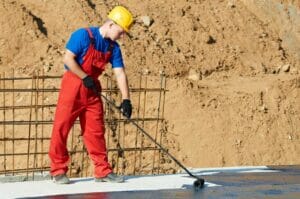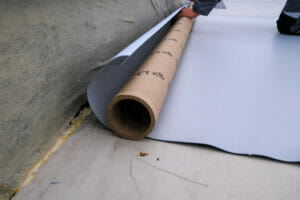As the weather gets warmer, you’ll probably start spring cleaning to help your Denver home recover from the winter cold. Along with sprucing up your home’s interior, you also need to pay attention to the outside, especially on your flat roof. This part of your house protects your whole property from the elements. Cold temperatures and winter debris can wear it down. Look for these common spring roof problems while maintaining your home to keep it in excellent condition this season.
Damage From Trapped Moisture
Water from heavy snow and debris can get stuck inside your roof. You’ll want to deal with trapped moisture as soon as possible to prevent leaks inside your home, especially as the spring rainstorms start. Old plants shed their leaves and needles in the fall and winter, and the wind carries them to your rooftop. This debris can get caught in gutters and on low-sloped roofs, trapping moisture that could wear down your home.
Leaves, in particular, draw in moisture from the air as they rot, which then spreads throughout the roof shingles, causing long-term water damage. Besides debris, winter snow and wind can wear down your shingles. Melted snow soaks into the roof and causes leaks and condensation in different rooms in your home. Heavy snow can also cause some parts to sag. Excessive moisture could lead to mold growth when left untreated, which affects your home’s indoor air quality. Over time, wet roof insulation increases your HVAC energy bills.
Pest Infestations
Imperfections in your roof could leave your home vulnerable to squirrels, raccoons, birds, and insects. As the weather gets warmer, animals and insects come out of hibernation and look for food and shelter to prepare for the spring season. Structural damage to your roof welcomes pests into your home and allows them to settle into your attic or crawl space. As you inspect your roof, keep an eye out for loose shingles, damaged flashing, or worn-out chimneys that create gaps where rodents and insects can sneak inside.
Pests can damage your roof, chimney, and eaves as they try to make a nest on your property and multiply. Rodents such as squirrels, mice, and raccoons can damage your electrical wiring and ventilation systems. They can also settle into your insulation or between walls and make a mess in the process. In extreme cases, any critters with access to the rest of your home can carry disease and contaminate your food supply. Carpenter ants and other wood-loving insects can eat through rotted wood on your roof.
Clogged and Damaged Gutters
Gutters drain water away from your home during rainstorms to keep your property in good shape. Leaves and debris from the fall and winter can clog your gutters and put additional pressure on them. Wind and temperature changes can also pull them away from your home and leave them vulnerable to damage. As you do your spring cleaning, you may find that debris has rusted your gutters or caused them to sag.
Roof Coatings: How Can They Help?
Roof coating offers many benefits such as reduction of heat energy costs and increased UV and waterproofing protection of your roof. Your roof is prone to damages caused by heat and ultraviolet rays, so adding roof coating strengthens your roof and increases its longevity. Roof coatings can prevent moisture and roof leaks, reduce the energy consumption of your home, and can even keep your home cooler during the spring and summer months.
Are you ready to get your Denver roof ready for the spring and beyond? Don’t delay, contact Denver Roof Coatings today for a free estimate!



